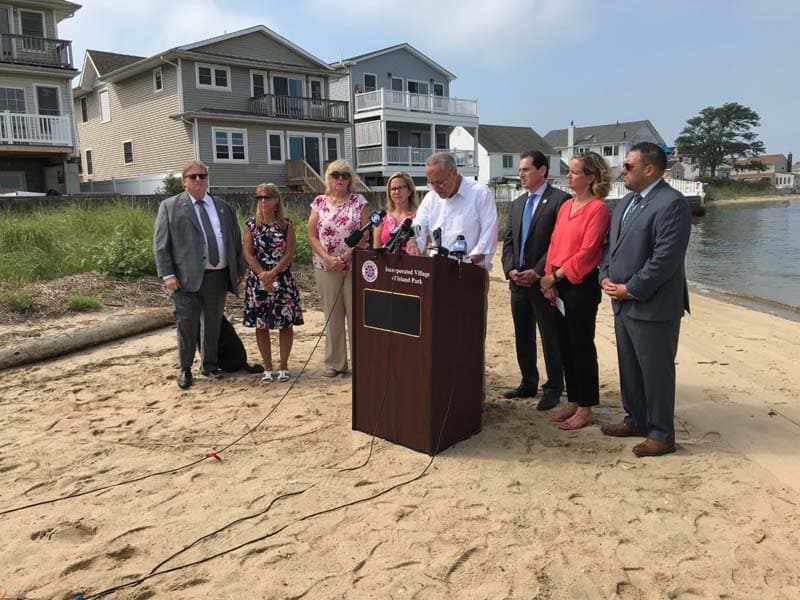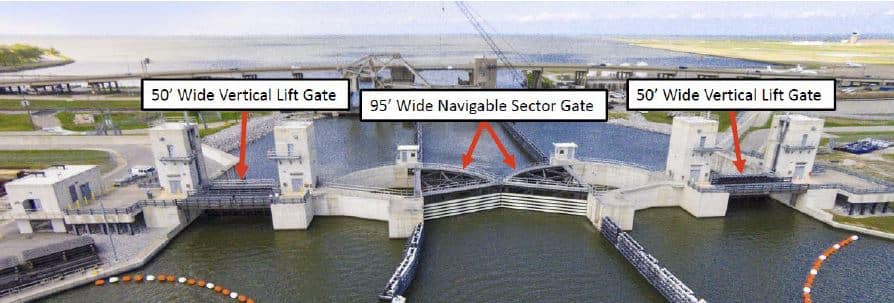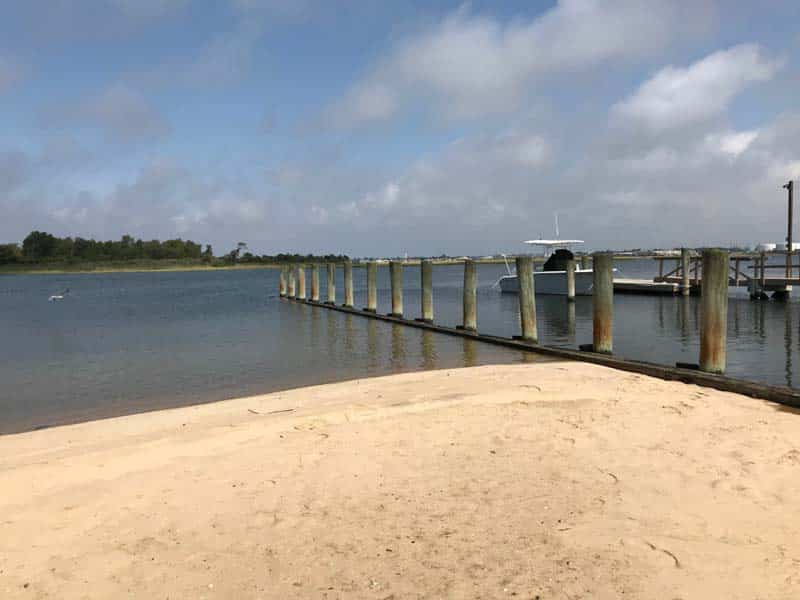The Sept. 30 deadline for funding an extended feasibility study by the Army Corps approaches

As hurricane season is upon us, the South Shore of Long Island is just as vulnerable as it was before Sandy. The superstorm put politicians to work, asking for funding to protect the northeast coastline.
The Army Corps of Engineers has been working on these projects; the normal feasibility study for the Corps is three years at a cost of no more than $3 million. The funding for the Back Bays of Nassau County feasibility study is set to expire on Sept. 30 and the Philadelphia District of the Army Corps, the group working on the Nassau County Back Bays project, is asking their superiors for more time and money.
“All the federal work thus far on Nassau’s Back Bays would be for naught if the feds simply left the resiliency project unfinished, to collect dust on some shelf while the threat of major storms and hurricanes that might impact Long Island remains on the table,” said U.S. Senator Chuck Schumer.
The Philadelphia District has requested a $6 million budget and another three years in order to properly conduct the feasibility test.
“We’re coordinating with our higher headquarters on the exemption request for the study and don’t have any updates to share at this time,” said Stephen Rochette, the public affairs officer for the Philadelphia District, which is working on this project because of their experience on back bay sites in their own district.

Other projects have received more time and extra funding similar to what the Philadelphia District is asking for, including the NY-NJ Harbor and Tributaries project by the Army Corps that is being conducted right now in order protect NYC and could include multiple sea barriers. While many see NYC as the financial capital of the country and its need to be protected and running during major storms, politicians are asking those with decision-making powers in the Army Corps to see the residents of the South Shore as important to what may be done to protect NYC.
“The Nassau County Back Bays study is crucial to ensure the continued vitality and resilience of our communities,” State Senator Todd Kaminsky said. “I stand with Sen. Schumer in urging the Army Corps to continue this essential study of the back bays so we can soon pinpoint what needs to be done to preserve our south shore coastal communities.”
From a public status report by the Philadelphia District in April, they have already presented four ideas.
Alternative 1A or Oceanfront Strategy includes storm surge barriers at East Rockaway Inlet, Jones Beach Inlet and Fire Island Inlet that would prevent a storm surge from entering the back bays. These three barriers have many names, storm surge barriers, sea gates, sea barriers, but the most important thing to know is that they all remain open while there is no major storm. This allows for fish migration and ship navigation when no storms are present. An oceanfront alignment of structural improvements such as beach nourishment, dunes, wetlands and living shorelines on Long Beach, Jones Beach and Fire Island.
Alternative 1B or Oceanfront/Back Bay Strategy also has the East Rockaway, Jones Beach Inlet and oceanfront improvements, but not the Fire Island Inlet. Instead, it uses a cross-bay barrier along the Jones Beach Causeway that would be constructed across the interior of the bay.
 Alternative 2 or Back Bay Shoreline Strategy does not include any storm surge barriers. This plan looks to reduce the flood risk by developing high land areas (roads and recreational areas) and use bulkheads and flood walls at the oceanfront.
Alternative 2 or Back Bay Shoreline Strategy does not include any storm surge barriers. This plan looks to reduce the flood risk by developing high land areas (roads and recreational areas) and use bulkheads and flood walls at the oceanfront.
Alternative 3 or Nonstructural Focused Strategy focuses on reducing economic damages to structures within the flood zone by using nonstructural measures, but the Army Corps also states that structural features could be used in certain situations. Natural and nature-based features and small-scale structural measures may be used.
The Army Corps also states the alternative of doing nothing in its status report. The report does not show what any of the alternatives would potentially cost or years to build.
“The Army Corps’ Nassau County Back Bays Study is of vital importance in the effort to protect our local infrastructure and the ecological health of our back bays,” Island Park Mayor Michael McGinty said. “This study is investigating the impacts and lessons learned from Superstorm Sandy and once complete will offer regional solutions on how best to protect our homes and beaches from more devastation.”


















